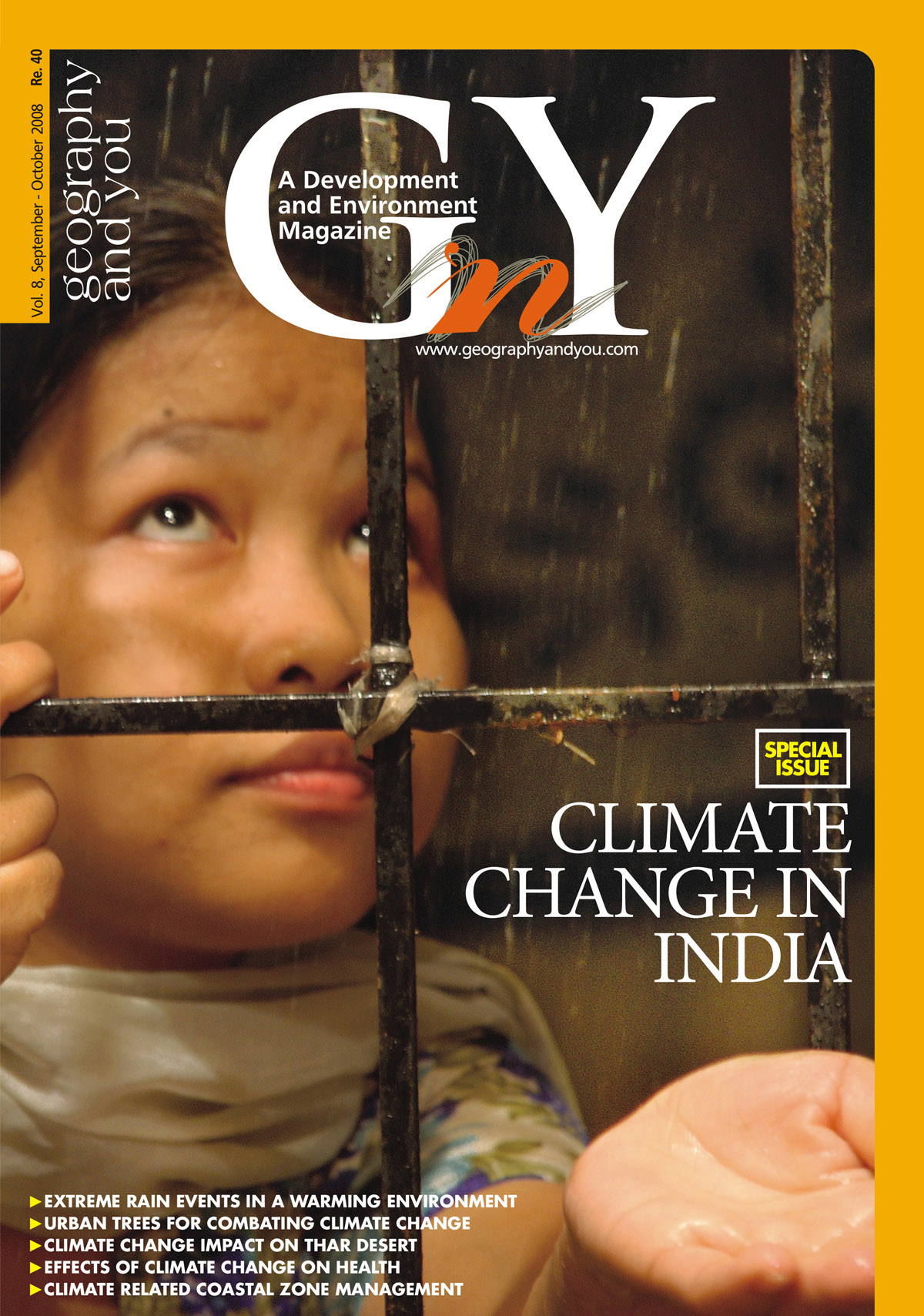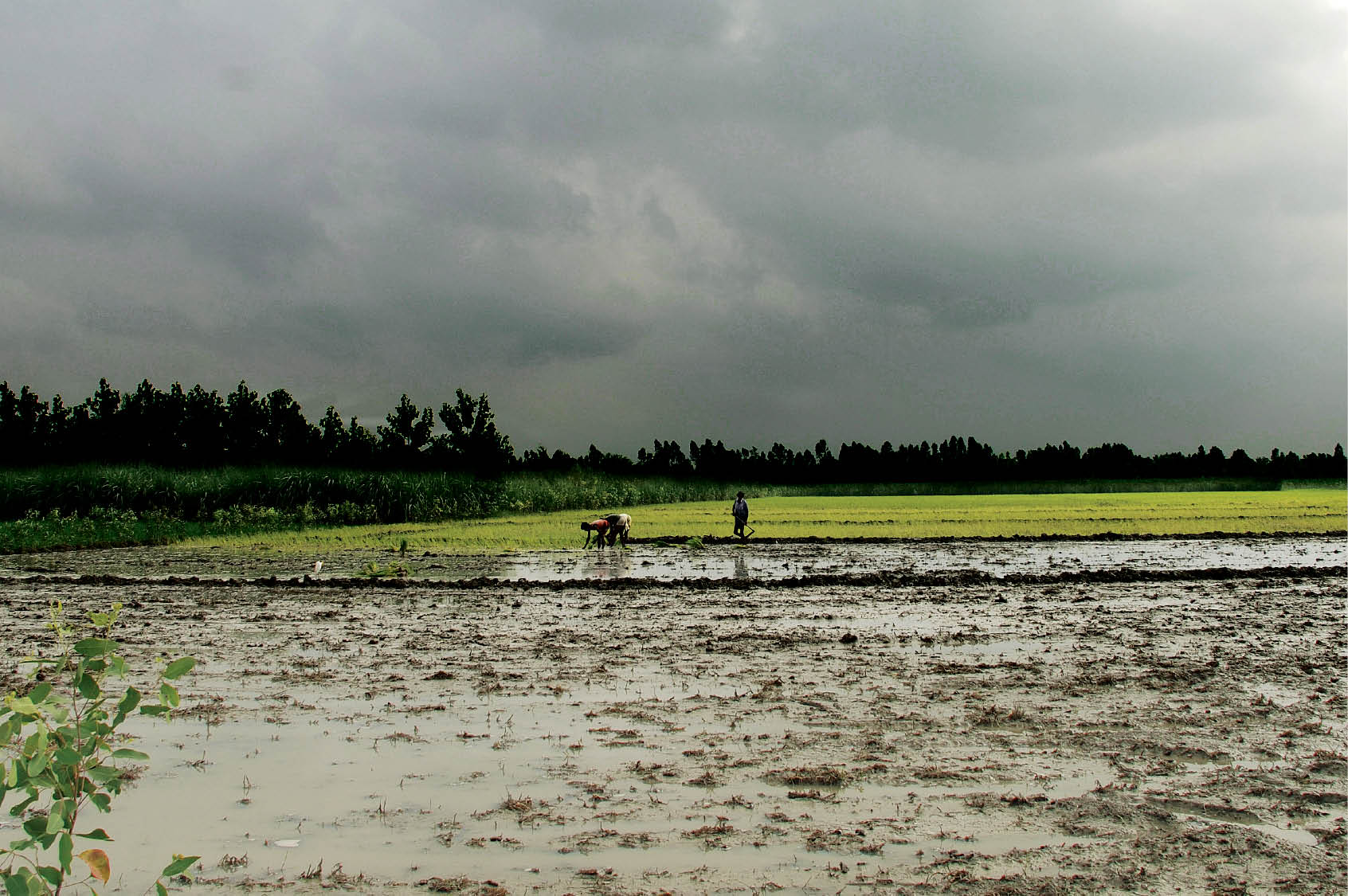
Inside this issue
Warming Warning
Extreme rainfall events have increased in the recent decades despite overall rainfall data showing a stable Indian monsoon, as precipitation from increasing heavy events is offset by decreasing moderate events. With reduced moderate events replenishing of soil moisture and recharging of ground water pose a serious concern.
Environment and Forests
The urban environment of modern India has undergone a dramatic change predominated by concrete structures, congested commercial spaces and incessant traffic. The degeneration of living environment in urban areas is largely due to new housing and townships, electrification, metro rails, widening of roads, increase in automobiles etc. As a result, the balance of urban climate has been disrupted as vegetation is sacrificed to make way for ‘urban development’.
Fact File
Climate in India has perceptibly changed in the last hundred years. The decadal and long term changes observed have pointed towards increasing events of heavy rainfall, rapid warming of the Indian Ocean, weakening of Monsoon Hadley Circulation and more.
Biogeographic Zones
Conservationists are aware that depletion of jungles and over harvesting limit the capacity of medicinal plants to proliferate. But a larger threat is the sensitivity of rare species to changes in temperature and humidity. With herbs and plants responding negatively to warming cycles, we are probably on the brink of losing not only our plants but also our legacy of traditional knowhow.
Traveller’s Diary
Responding to the advertisement seeking doctors for the 28th Scientific Expedition to Antarctica I found myself flying through menacing cumulonimbus to land safely in rain swept Dabholim Airport, Vasco da Gama, Goa for an interview at NCAOR.
Arid India
The arid western part of Indian subcontinent, including the western part of Rajasthan and the adjoining part of Pakistan, is likely to experience large magnitude climatic changes.
Global Health Risks
There is now good evidence that regional changes in climate, particularly increases in temperature, have already affected a diverse set of physical and biological systems in many parts of the world.
Wildlife Woes
The Olive Ridley turtles, high on the endangered list, visit the coasts of Orissa to lay eggs - an honour bestowed upon us by nature. However growing industrialisation and illegal fishing have converted our pristine beaches into a deadly battlefield for these trusting guests. Hundreds of these turtles are found dead along the coast, once considered a safe haven for nesting.
The recorded forest area of Chhattisgarh is 44.21 per cent, way above the national average of 20.6 per cent. Burgeoning with virgin forests the State serves as a refuge to many endangered species of flora and fauna.
Vulnerable Frontiers
The intensity of use of coastal areas is growing under current developmental trends. The protection of coastal zones is vital as it supports more than hundred million people of our nation. In the light of warming impacts, coastal zones are likely to be the first to be threatened.
In Conversation with
Dr. Shailesh Nayak’s calm aura, ease and lucidity spoke of an authority that complemented his tall frame. Self effacing about being the pioneering scientist in shaping the recent Tsunami Warning System, Dr Nayak was happy to have placed the best possible technology worldwide, which would send real time warnings and protect the coastal populace of our subcontinent. Strengthening the technological base he asserted was his foremost concern, as it would assist a better understanding of earth processes as well as create a service base for data dissemination to user groups in the sectors of agriculture, disaster management, sports and more. Worried about the empirical nature of monsoon models, he believes that monsoon predictions would improve dramatically with enhanced observation systems. In about three years, he emphatically adds, the systems would be in place and by 2012 accurate predictions would make it easier to manage extreme events of rainfall.
In brief
Dear readers, Weather seems to have turned strangely awry in recent times. Round the clock heavy rains, extended mid monsoon breaks, hotter days, increased cyclonic circulations, even in the Arabian Ocean–unheard of in the last hundred years–are all visible manifestations of something that is

